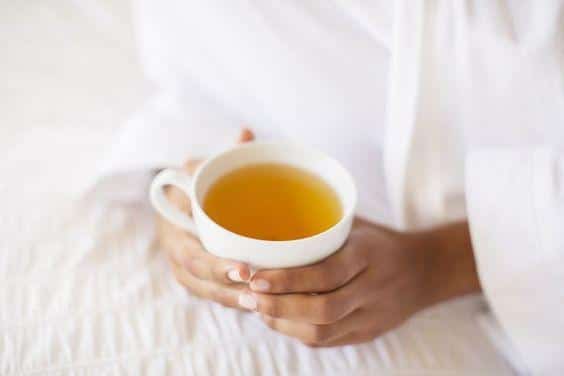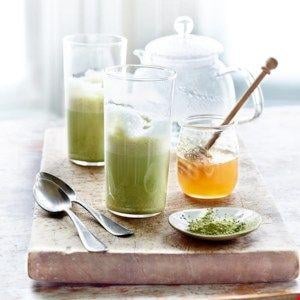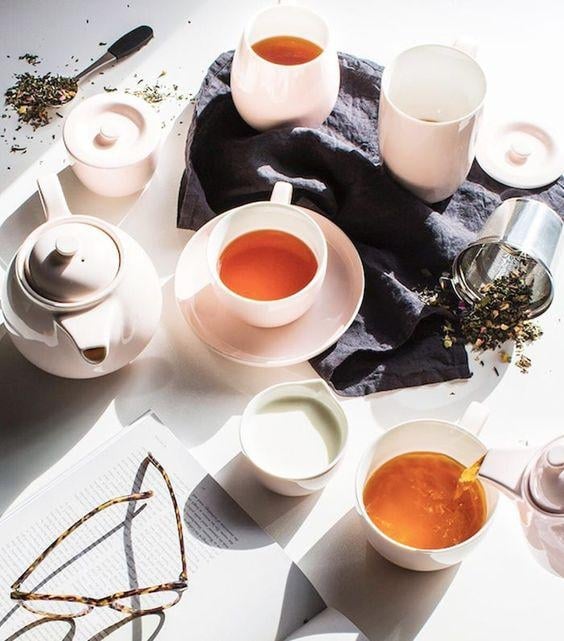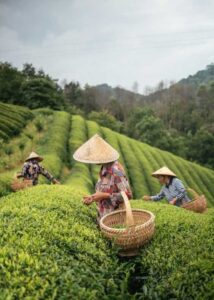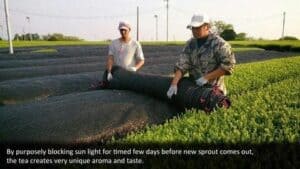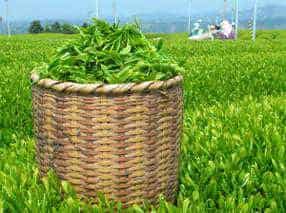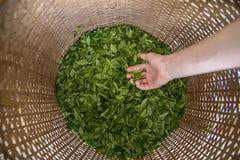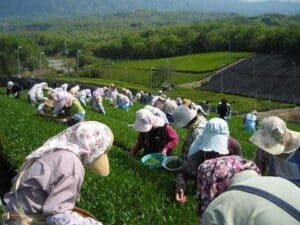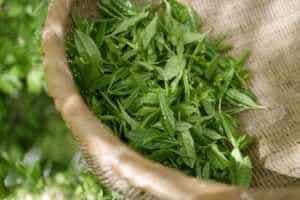Category: Matcha Knowledge
Matcha Latte Art: Creating Beautiful Designs with Green Tea
Understanding the Art of Steeping Tea
The Oral Health Benefits of Green Tea
3 Reasons Why Drinking Green Tea Enhances Your Smarter Look
Tea Drinking Dos and Don’ts
How to Become a Tea Expert
I believe that many people who love tea would like to be known as a Tea Expert / Tea Sommelier, who has special knowledge and expertise, can distinguish different types of tea, and know the temperature or type of water required to brew each type of tea to achieve the best taste.
If you have true knowledge and understanding of tea brewing, you’ll not only become a Tea Expert, but you’ll also be able to leverage this knowledge to further your business, such as becoming a consultant at tea shops and restaurants, helping to design and pair food and dessert menus with tea to enhance the flavors. So, let’s take a look at the list of what knowledge you need to become a Tea Expert.
Tea cupping is a method of brewing tea that has many different brewing methods, such as using chazen to brew tea made from green tea powder (see more at shorturl.at/desuL) or using cold-pressed tea (see more at shorturl.at/gAV57). There are many other ways to brew tea that you should know.
Tea culture: Know the tea drinking culture of each country so that you can create the tea story you want to present.
Different brewing and presentation techniques of tea: How to brew and present each type of tea to make it more appetizing, or what style of food or dessert should be paired with it?
Blending and Flavoring Tea : Learn how to blend your own teas, or combine them with flowers or other herbs, to create new flavors and aromas.
Tea brewing and presentation techniques, Japanese-style tea serving styles, and English-style tea are also different. Serving in the correct containers or using decorative props will greatly enhance the aesthetics of tea drinking.
Understand how to grow and harvest tea to obtain the best tea leaves and tea powder, whether it’s organic tea cultivation or simple experiments at home. Learn the factors required to grow tea for the best results.
However, becoming a Tea Expert requires more than just in-depth knowledge. Experience and repeated experimentation will enhance your tea-making senses, including aroma, flavor, and color perception. Beyond the essential knowledge and understanding of tea, additional knowledge about marketing or tea shop management will further enhance your tea shop’s marketing plans and sales techniques.
Source
Article from: Fuwafuwa
Can you turn your garden into a green tea plant?
Green tea lovers will love this experiment: Transform your home garden into a green tea tree. Start by planting seeds in a 6×8-inch plastic bag. Fill the bag with soil mixture. Place the good tea seeds in the center of the bag, bud side down, and cover the seeds with about an inch of rice husk charcoal or sand mixed with coconut husks. Shade the seeds and water them regularly during planting. This method is chosen because it doesn’t take up much space in a home garden. Propagation by seed is also a popular method in Thailand. Tea trees grown from seed have strong root systems and a taproot that can withstand drought well.
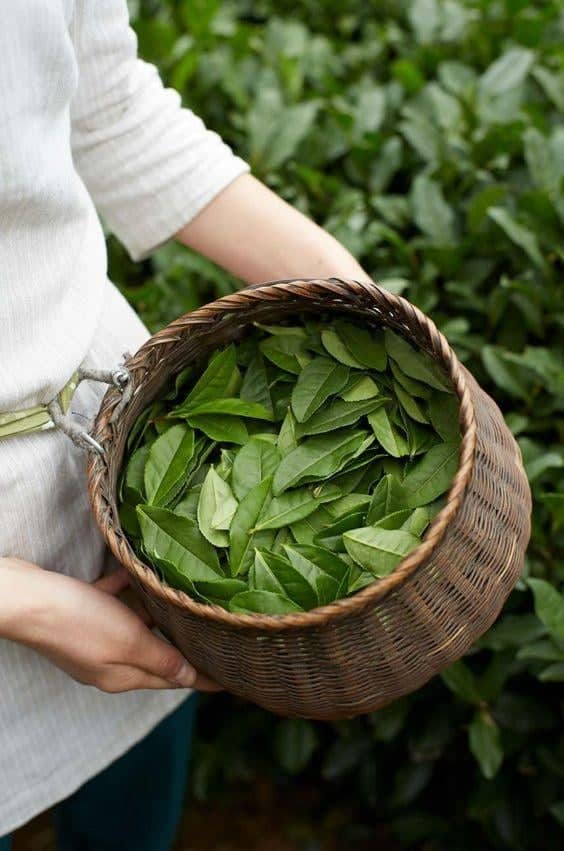
An important factor in growing tea is that it can grow regardless of hot or cold weather, except in areas with ice. There are other factors as well, namely:
- Soil: Tea will thrive in well-drained, slightly acidic, loamy soil with a pH of 4.5-6.0 and a slope of no more than 45 degrees.
- Humidity and rainfall: The area should receive consistent rainfall throughout the year. Minimum rainfall should be between 1,140-1,270 millimeters per year. A lack of water will stunt the growth of the tea plants and prevent them from sprouting, leading to reduced yields.
- Temperature: Tea can grow in different temperatures, but it thrives best between 25 and 30 degrees Celsius, and the temperature remains relatively constant throughout the year, allowing the tea to continuously produce new buds.
- Altitude above sea level: Tea grown in high altitudes of 1,000 meters or more, with cool weather, will produce high quality tea leaves. The tea leaves have a good smell and taste, but the yield will be low. Tea grown in low altitudes, with relatively hot weather, will produce high yields but lower quality than tea grown in high altitudes.
After checking all these factors, it is clear that the factors that are not suitable for growing tea are:
- The lower soil layer is rocky or gravel, which allows the tea to root shallowly to find food.
- It is an area that does not have drainage and has limestone and a pH of more than 6.
- The area is too steep.
- Soil that has little organic matter and cannot retain moisture
- Areas with strong winds where it is impossible to make a windbreak, because tea trees are plants that need shade to protect them from the wind, helping to reduce daytime temperatures and reduce the amount of sunlight that shines directly on the tea trees, allowing the tea leaves to photosynthesize better. Because if the tea trees receive full, direct sunlight, it will make the leaves small, yellow, or burn. If the tea leaves are not cooked, the trees will deteriorate and eventually die.

Tea harvesting is crucial because producing high-quality tea begins with fresh, high-quality tea leaves. The best quality tea leaves are those harvested from buds containing one bud and two leaves. Tea harvesting begins at 60 centimeters, typically from March to November, with an average harvest every 10 days. The ideal time to harvest is between 5:00 AM and 2:00 PM. Don’t pack the buds too tightly in baskets or sacks, as this can bruise the buds and compromise their quality due to the heat generated by the leaves’ respiration.
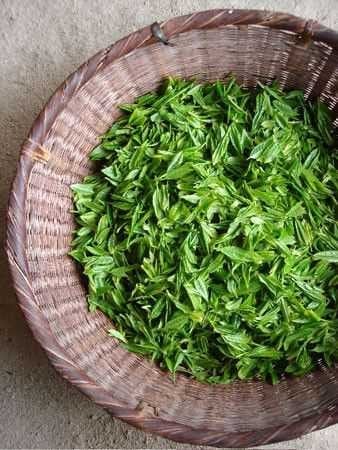
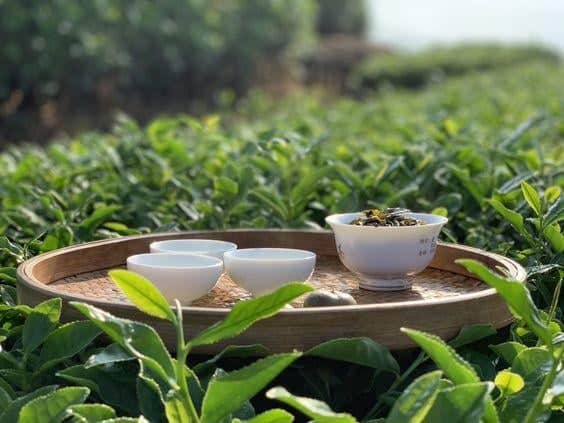
Good tea seeds suitable for planting should be collected from fully ripe, brown berries that are still attached to the tree. Seeds that have fallen under the tree should not be collected. After collecting fully ripe berries from the tree, remove the shells or place them in a winnowing basket or basket and leave them in a shady area. The tea berries will dry and burst within 2-3 days. Then, quickly plant the seeds, as tea seeds contain a high oil content, which causes a very rapid loss of germination. Before planting, soak the seeds in water for 12-24 hours. Spoiled seeds will float; cut them off and use only the seeds that sink for planting.
After you’ve tried growing your own tea and want to create an organic tea farm, you can get tea that’s safe for your health in the long run, with no chemical residue. You can find more details at : Getting to Know Organic Green Tea Growing.
Source: https://www.japanesegreenteain.com
https://i.pinimg.com/originals/72/ea/da/72eada1447275ef65d7ab82ff6cd381e.jpg
http://technology-farmmer.blogspot.com/2015/02/blog-post_20.html
Article from: Fuwafuwa
How to Prepare a Matcha Latte with Non-Dairy Creamer for a Milder Flavor
Is It Possible to Brew Green Tea in a Microwave?
The 5 Most Common Mistakes in Brewing Matcha
10 things about growing green tea that you (probably) never knew
Green tea is at the heart of Japanese culture. From the harvesting to the preparation of the leaves, every step is meticulous, complex and deeply rooted. Green tea harvested in Japan has certain flavors and nutritional properties that are different from teas from China and other parts of the world. Here are 10 things about Japanese green tea that you (maybe) didn’t know.
- The first harvest of the year, the tea leaves are the most nutritious and sought after. The first harvest begins in May and lasts for several weeks until June. This harvest is known to produce the highest quality green tea leaves, largely due to the slow growth during the cold months, which makes the leaves denser in nutrients, resulting in a better flavor. The leaves picked in spring contain three times as much L-theanine as those produced in later harvests, giving this first batch of tea a sweet and mild flavor.
- The second harvest of the year in June and July is very hot because it is summer, making harvesting very difficult. During this time, the tea leaves grow faster and are of lower quality, with a more bitter taste, requiring more efficient management of both employees and harvest control.
- KANREISHA CURTAIN or black curtains that are popularly used to cover the ground can be used to protect tea plants from direct sunlight. About a month before each harvest, tea plants are covered with curtains to limit the amount of sunlight that does not directly hit the tea plants. There are two types of curtains used in Japan: the type that uses direct cloth to cover the plants and the type that uses awnings to block the sunlight. Each tea plantation has different uses. Some places use both types. Tea plants that are covered with such curtains before harvesting will help the tea to develop a sweet taste.
- Each tea leaf is carefully selected by the tea pickers. Compared with the tea leaves selected by machine, the quality of the tea leaves is not as high as those picked by hand. The taste of the tea leaves by hand is more mellow and the aroma is more delicate. The best time to pick the leaves is when there are three to five young plants and the leaves are of the right size. Picking too early means less yield. Picking too late affects the quality of the tea. Even one day can make a difference and make the leaves bitter. Therefore, it is very important to pick the tea leaves at the right time and pick them quickly and all at once. Therefore, each worker must use his experience to pluck the leaves quickly and meticulously.
- Japan actually produces less tea than other countries. Despite its strong green tea culture, Japan produces only 7% of the world’s green tea. Most of it is consumed domestically, and only a small portion is exported to other countries. The Japanese consume 95% of all tea production in the country, leaving only 5% exported to other countries.
- The most popular method of storing tea leaves is still the use of traditional wooden baskets. Despite the widespread use of machinery and technology, traditional wooden baskets are still used to store tea.
- In the fall, tea plantation workers start preparing the farm for the next year’s harvest. Green tea trees are pruned in the autumn months of October and November. Pruning at this stage ensures that the young leaves of the old leaves do not mix with each other and reduce the harvest in the spring of the following year. Failure to prune at the right time will harm the tea trees and may even result in weak tea trees. Therefore, in late summer and early autumn, the soil must be enriched and the pH of the soil adjusted to the appropriate level.
- There is a tea harvest tour. Obubu is the Kyoto word for a type of green tea, which is one of the most expensive teas in Japan, costing around 14,000 yen per kilogram. For over 800 years, the farm in rural Kyoto Prefecture has been open to visitors and the public during the harvest season. It begins with a morning tour of the farm and the opportunity to pick your own tea leaves. The staff will demonstrate how to pick the leaves, and visitors will be given a traditional wooden basket to collect the leaves. The leaves can then be sent for processing or roasted, ready to be served as a tea drink made from the leaves you have picked for a delicious cup of tea.
- Green tea plants require special care during the winter. Dry leaf straw and bamboo husks are placed beside the plants to provide warmth during the cold and snowy months, act as fertilizer and help maintain the soil at the right level of moisture. Since many plants are prone to disease and die during the winter, the tea plants must be well cared for to ensure they are ready for the next harvest.
- Harvesting in Japan is different from the techniques used in China, as the Japanese pick certain leaves at different times of the year, while in China they usually pick all the leaves at one time.
The process of harvesting tea leaves is a complex task that takes a whole year. From the first harvest to the last, farmers in Japan work tirelessly to produce the highest quality tea possible for the best tasting tea.
Source
Article from: Fuwafuwa


